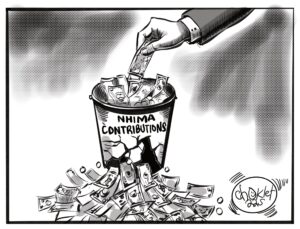Zambia has been grappling with public debt effects for over two decades. Recently, the country made headlines with its efforts to restructure public debt under the G20 Common Framework. The debt situation has spurred a closer examination of Zambia’s debt landscape, which comprises both external and domestic debt. According to the Ministry of Finance and National Planning, as of the end of December 2022, Zambia’s total Central Government debt stock reached US$25.86 billion. Of this, external debt amounted to US$14 billion, while domestic debt stood at K210 billion (US$11.6 billion). Thus, nearly half of the country’s total debt stock falls under the category of domestic debt.
As part of its economic reform program aimed at restoring fiscal sustainability, the Zambian government has imposed a freeze on non-concessional external loans. This strategic move necessitates a significant shift in the government’s borrowing practices. Currently, Zambia relies on external and domestic financing in a 70:30 ratio, but it aims to rebalance this to 45:55 by 2025, favoring domestic borrowing. Hence, in this week’s edition of Monday Opinion, we delve into an in-depth exploration of Zambia’s domestic debt landscape and its role in the nation’s domestic resource mobilization efforts.
Understanding Domestic Debt
Domestic debt, by definition, encompasses government securities issued in local currency, such as Treasury Bills and Bonds, as well as public liabilities, including arrears. Many countries have increasingly turned to domestic securities markets as a source of financing. Several reasons underpin this shift, including a decline in the availability of external financing since the 1990s financial crisis and the associated volatility risks related to non-concessional foreign finance. Furthermore, the development of domestic securities markets, featuring longer tenor securities and lower borrowing costs, has attracted attention. New intermediaries, including fully funded pension funds like NASPA and other investment funds, have also bolstered demand for domestic government securities in Zambia.
Merits of Domestic Debt
Using domestic securities to finance government expenditure offers several advantages. First, it can effectively address budget shortfalls by providing funds for budget support. For instance, Zambia’s domestic debt, represented by Government Securities, increased by 1.85 percent to K213.88 billion as of the end of June 2023, primarily to meet the financing needs of the budget.
Additionally, domestic debt can effectively support monetary policy through open market operations, a contrast to external debt. When managed well, domestic debt can mitigate the government’s exposure to interest rates and currency risks, which are key drivers of debt defaults. It also injects much-needed liquidity into the domestic financial system, facilitating an efficient and market-based allocation of capital. This, in turn, is vital for the private sector’s growth, leading to job creation, increased consumer spending, and enhanced economic growth.
Challenges of Reliance on Domestic Debt
However, extensive reliance on domestic debt has its challenges. Domestic debt may be more expensive than external concessional finance, leading to a significant burden on government revenues. This can strain the government when it comes time to repay, potentially shifting spending priorities in favor of domestic debt servicing. Moreover, due to the short-term nature of domestic debt, governments may face liquidity risks as they must continually roll over large sums. This could result in crowding out private sector investment, leading to sluggish domestic economic activity.
Government Arrears
Zambia’s government arrears in local currency form a significant portion of domestic debt. As of the end of the first quarter of 2023, total arrears stood at US$10.5 billion, with public sector external arrears at US$5.5 billion and domestic arrears at US$4.9 billion. Despite the government’s ambition to clear these arrears through a domestic arrears dismantling strategy, there has been little progress in reducing the stock of domestic arrears. This directly impacts liquidity in the economy, which is crucial for private sector growth and overall economic well-being.
Balancing External and Domestic Debt
To ensure fiscal sustainability, Zambia must strike a balance between external and domestic debt. Over-reliance on domestic debt could hinder domestic resource mobilization efforts. A government heavily reliant on domestic debt may not prioritize tax revenue generation and investment in tax administration infrastructure and training. This could result in lower tax compliance and revenue collection. While domestic debt presents opportunities for budget support and monetary policy flexibility, it also carries the burden of higher costs and liquidity risks. Striking a careful balance between external and domestic debt is essential for fiscal sustainability and efficient resource mobilization.
Look out for next week’s opinion as we delve further into the conversation around Zambia’s domestic debt.
About the Author: Peter N Mumba is a policy researcher and development economist currently coordinating activities for the Zambia Debt Alliance. He holds a master’s degree in economics from the University of Namibia, along with additional qualifications in monitoring and evaluation and business information systems.
























